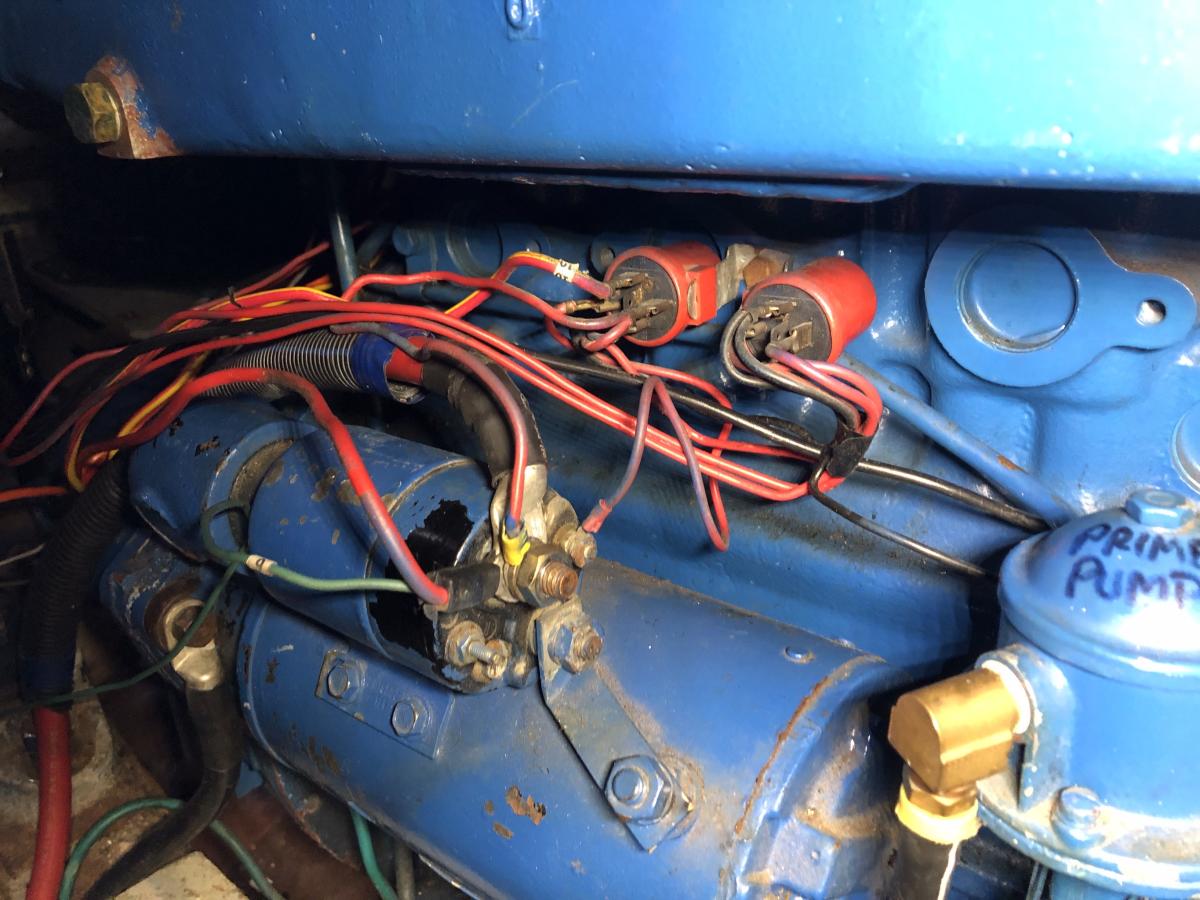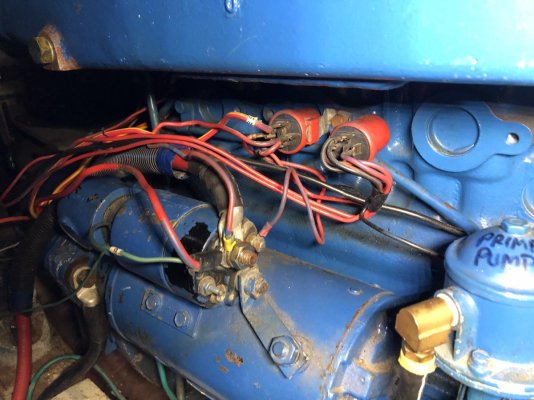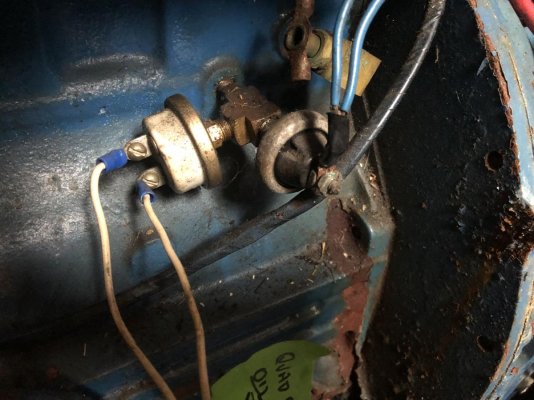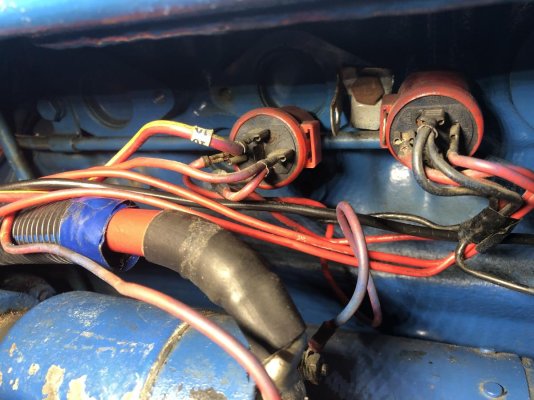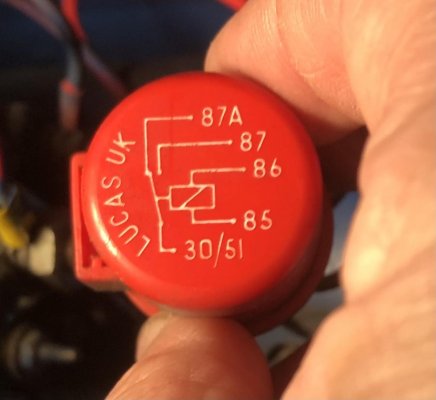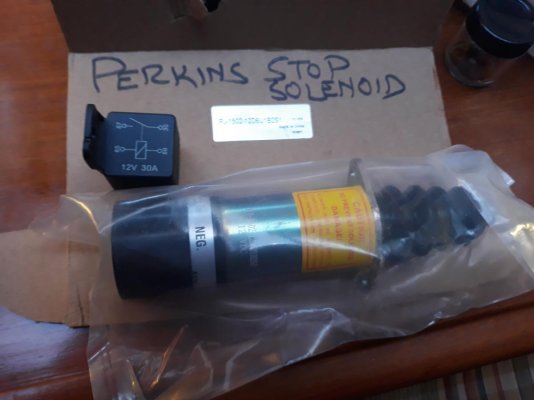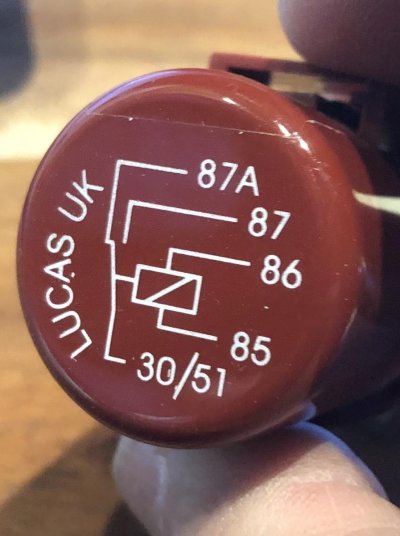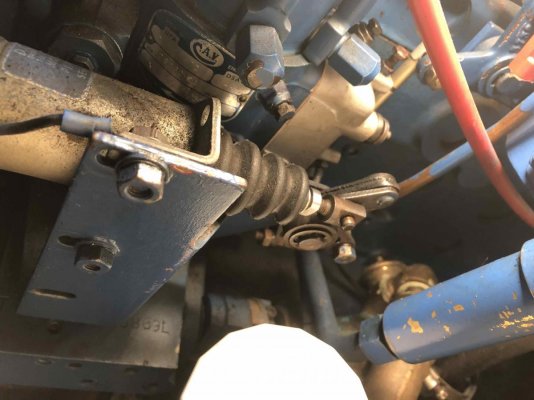Up and running !! (and stopping !!)
I ordered two relays, and the first one turned out to be bad. Bench testing showed no activation of pin 87 when voltage applied across pins 85 and 86.
The second relay worked fine, on the bench and in the boat. Once installed, the relay did activate pin 87 and the stop solenoid did receive 12V after pressing the stop button at the console (so switch, relay, and wiring OK). However, there was still no "click" from the stop solenoid.
On my Perkins, the stop solenoid pulls on a linkage which lifts a rod in the injector pump and shuts off the fuel supply (see photo). On the opposite engine, I could move this linkage easily with my hand, but not on the Port engine. It was impossible for me to lift the linkage with hand pressure, which turned out to be a separate problem from the relay.
So, I dismounted the stop solenoid from its bracket and examined it. The solenoid core (rod) could be easily moved in/out without friction. Then I bench tested the stop solenoid with a jumper using 12V and it clicked closed just as it supposed to, so definitely not seized up.
Next, I lubricated all the joints on the linkage to the fuel injector, and worked them back and forth with my hand. Once everything was limber, I reinstalled the stop solenoid, and everything worked fine.
In retrospect, probably two problems. Bad relay, and stiffened linkage between the stop solenoid and the fuel injector.
With everything back in place, I can wiggle the linkage with my hand, just as on the other engine.
A few tense moments and scratching my head, but seems to be solved. Lots of help from friends, and TF posts, so many thanks to all.
